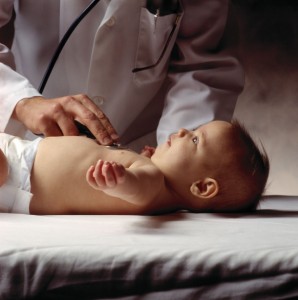Study Finds Genetic Mutations May Cause Cerebral Palsy
A recent Canadian study has found that up to 10% of cerebral palsy cases may be caused by genetics. Consequently, the authors of the study recommend that all children should be genetically tested.
“Our findings were shocking, actually,” said Dr. Stephen Scherer, director of the Centre for Applied Genomics at The Hospital for Sick Kids in Toronto, Canada and the principal investigator of the study. “When I showed the results to our clinical geneticists, initially they were floored.”
Cerebral palsy is the single most common motor disability in children. According to estimates from the Centers for Disease Control and Prevention’s (CDC) Autism and Developmental Disabilities Monitoring (ADDM) Network, approximately one in 323 children has been diagnosed with cerebral palsy.
Cerebral palsy causes
Cerebral palsy is traditionally assumed to be caused by environmental issues, including a brain injury at birth caused by oxygen deprivation, infections in the brain of the developing fetus and stroke. It is the leading cause of physical disability in children, mainly causing difficulties with motor development, but its severity varies greatly, as some children are only slightly impacted, while others cannot walk or talk. In 2008, 58.2% of children with cerebral palsy could walk on their own, 11.3% could walk with the assistance of a hand-held mobility device and 30.6% had limited or no walking ability at all.
Nature Communications published the study, revealing that genetic testing was performed on 115 children with cerebral palsy and their parents. Many environmental risk factors noted above had previously been linked to many of the children’s condition. Researchers were surprised to find that a group of clinically relevant genetic changes, known as copy number variations (CNV), were found in 10% of the children in the study. Some of these variations were inherited from their parents, while others were new mutations. In total, such genetic changes are typically noted in less than one percent of the population at large.
A total of 5% of the children that tested positive for CNVs presented small genetic changes that impacted multiple genes.
“It’s a lot like autism, in that many different CNVs affecting different genes are involved, which could possibly explain why the clinical presentations of both these conditions are so diverse,” Dr. Scherer said.
Study findings reveal key information
The other 5% of children with CNVs presented genetic changes that were much larger. “For five percent, these big changes are the cause of their CP,” Dr. Scherer told CBC News.
The findings of the study have caused the researchers to encourage the medical community to consider conducting routine genetic tests for the diagnostic assessment of children impacted by the condition.
“Finding an underlying cause for a child’s disability is an important undertaking in management,” said Dr. Michael Shevell, pediatrician-in-chief at McGill University Health Centre and co-author of the study.
“Parents want to know why their child has particular challenges,” Dr. Shevell said. “Finding a precise reason opens up multiple vistas related to understanding, specific treatment, prevention and rehabilitation. This study will provide the impetus to make genetic testing a standard part of the comprehensive assessment of the child with cerebral palsy.”
- BioNews, Ten Percent of Cerebral Palsy Cases Have Genetic Cause http://www.bionews.org.uk/page_554559.asp
- Centers for Disease Control and Prevention, Data & Statistics for Cerebral Palsy http://www.cdc.gov/ncbddd/cp/data.html



 Resources
Resources
 Resources
Resources
